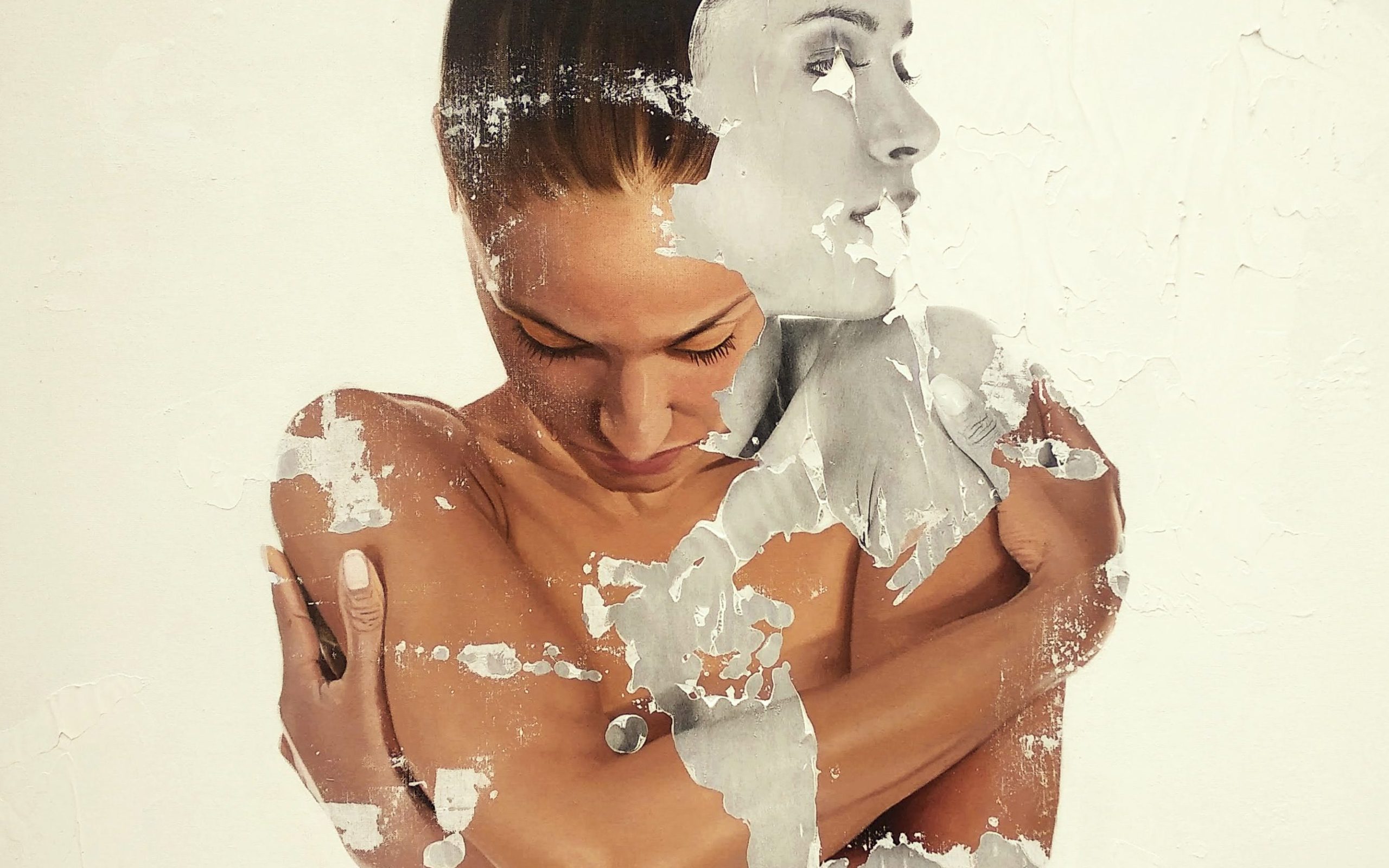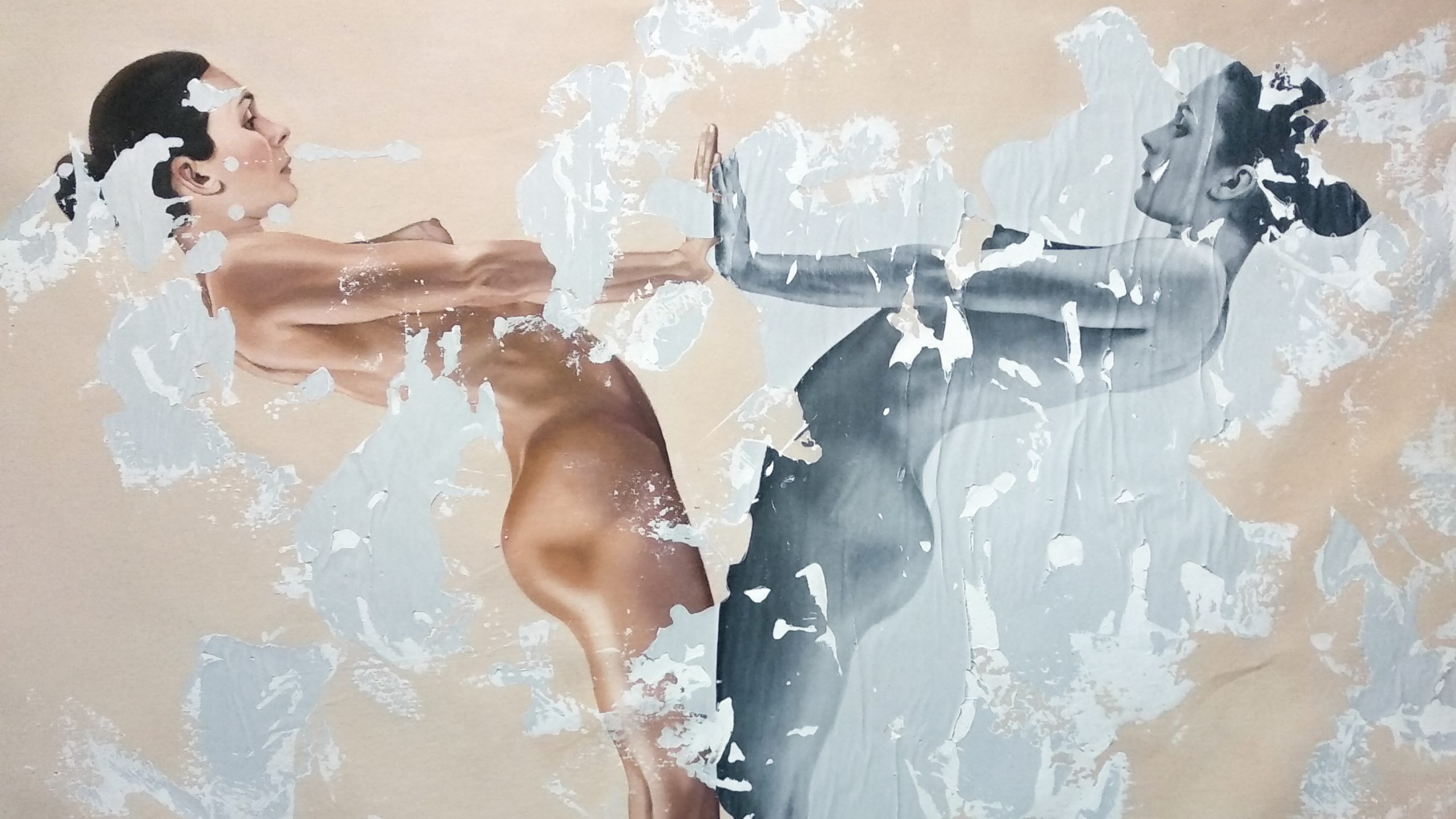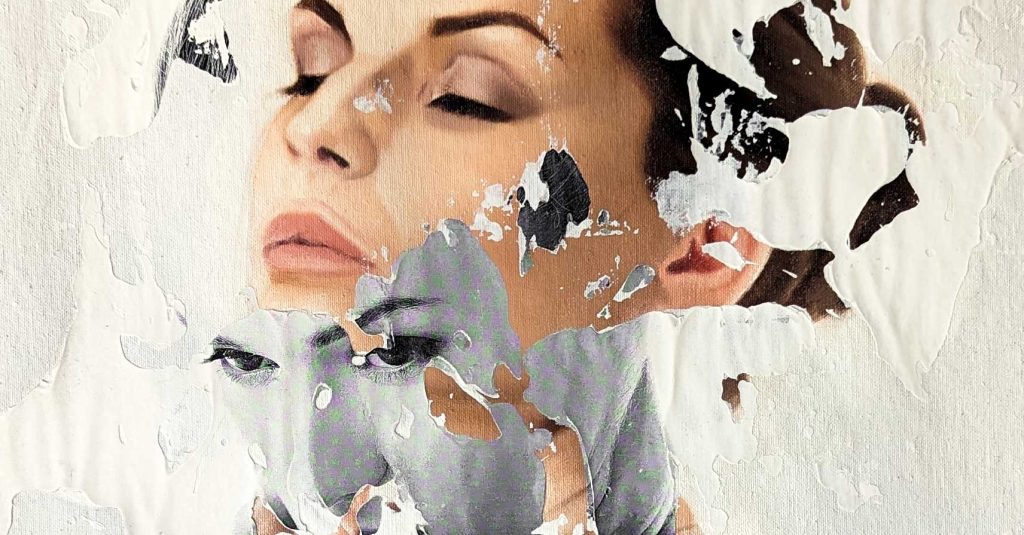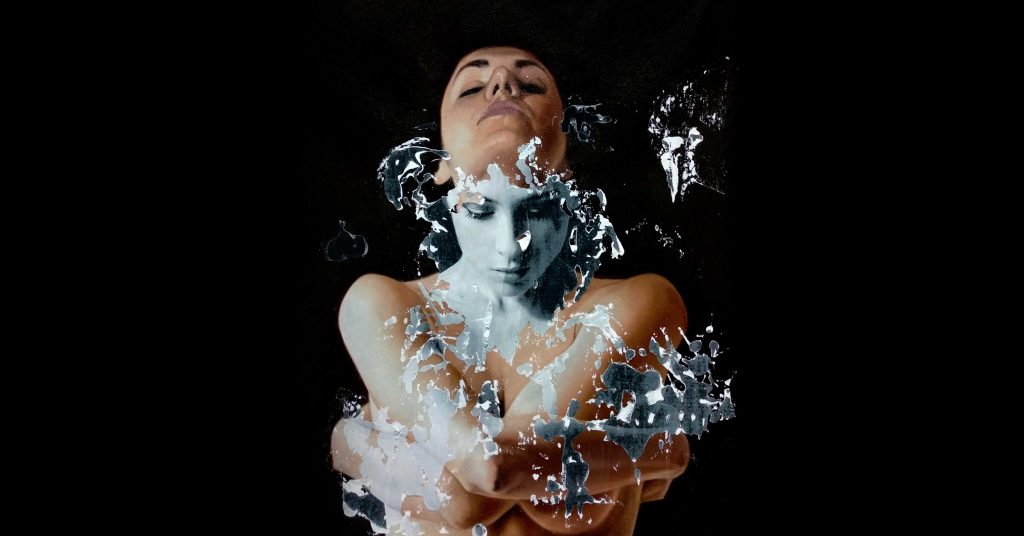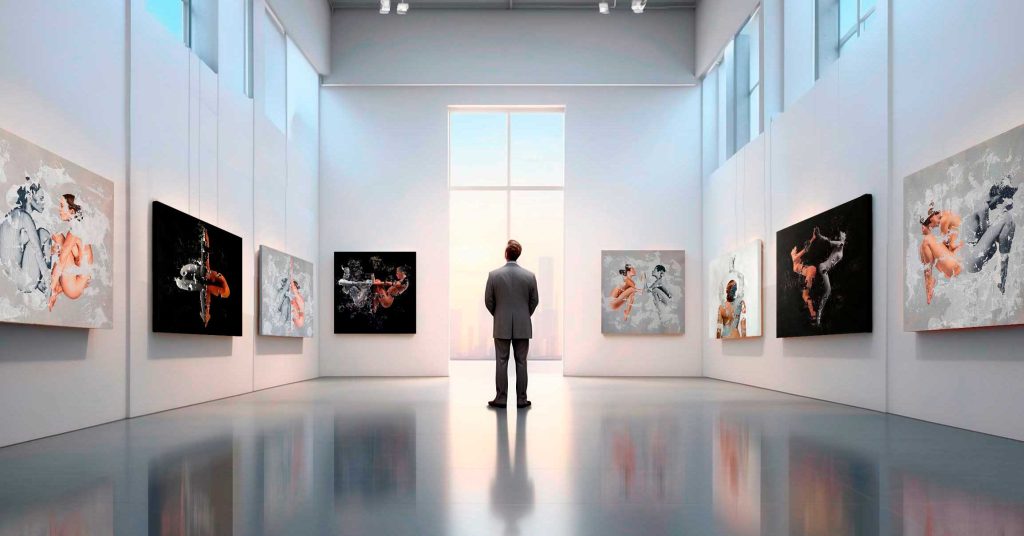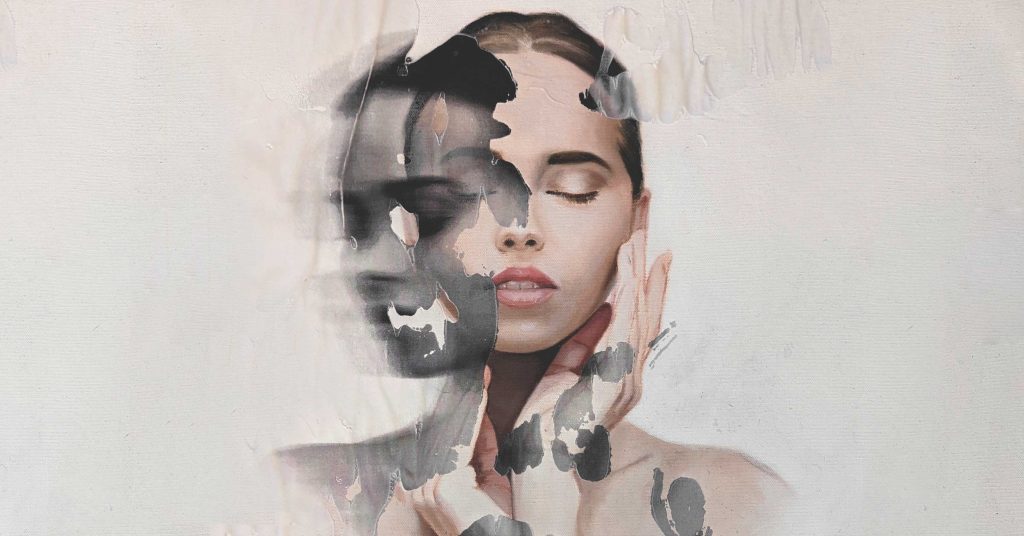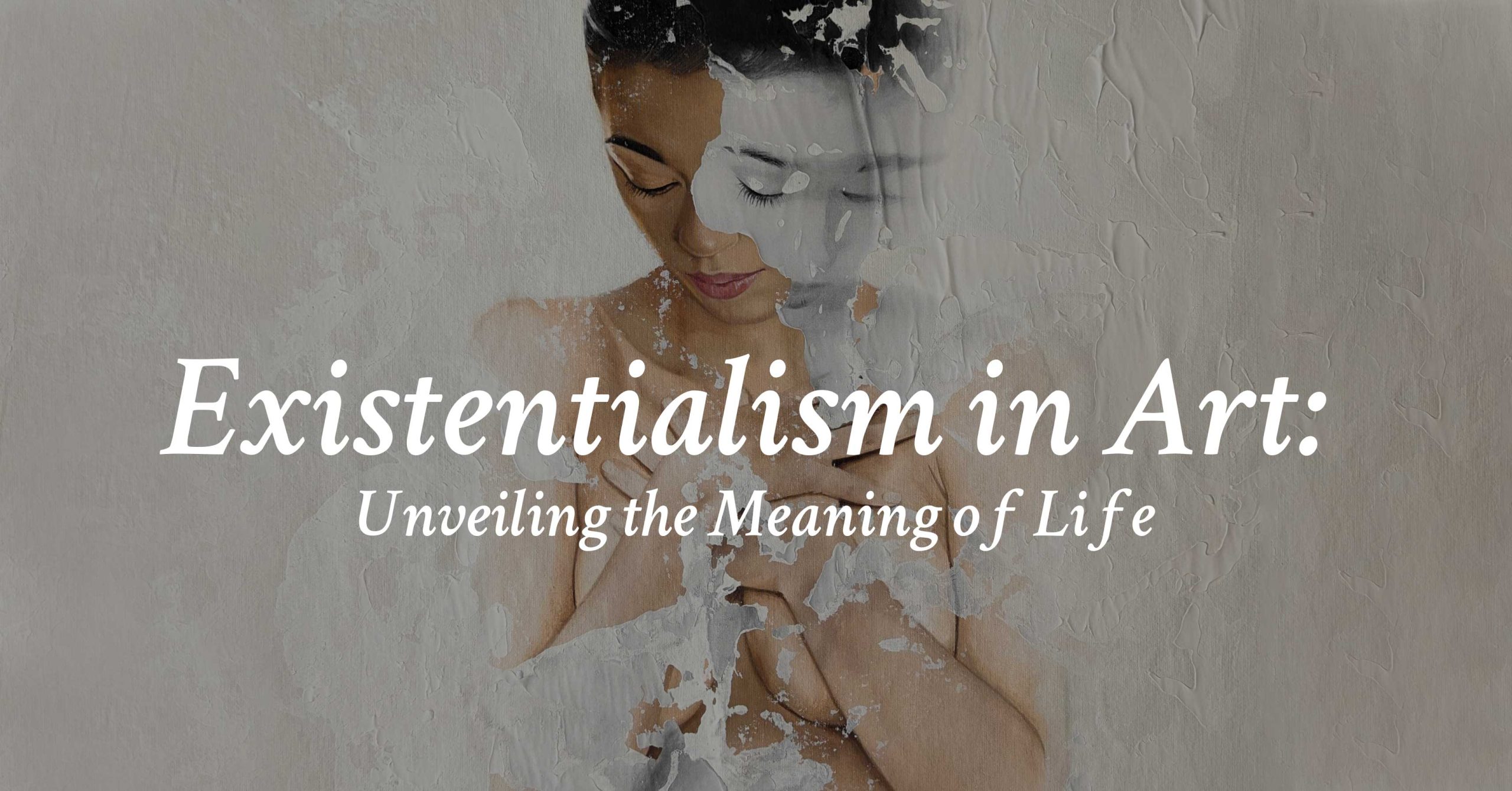
Introduction
Have you ever wondered what is the meaning of life? Why do we exist? What is our purpose? How do we cope with the uncertainty and absurdity of the world? These are some of the questions that existentialism tries to answer.
Existentialism is a philosophy that emphasizes individual existence, freedom, responsibility, and absurdity. It rejects the idea that there is a predefined or universal essence or meaning to human life. Instead, it asserts that each person has to create their own meaning and values through their choices and actions.
But existentialism is not only a philosophy. It is also a way of expressing and exploring the human condition through art. Existentialism in art is a fascinating world where art meets philosophy. It is a world where artists use powerful visuals to convey their personal experiences, emotions, and insights about existence.
In this blogpost, we will discover how existentialism in art unveils the meaning of life. We will look at some of the key themes of existentialism in art and how they reflect the human experience. We will also trace the origins and influence of existentialism on various art movements and see how existential themes continue to resonate in contemporary art and culture. Finally, we will provide some suggestions and questions for further exploration or discussion of existential themes in art.
By the end of this blogpost, you will have a deeper understanding and appreciation of existentialism in art. You will also be inspired to create or appreciate art with newfound understanding.
Key Themes of Existentialism in Art
Existentialism in art is not a single style or genre. It is a diverse and dynamic field that encompasses different periods, genres, and mediums. However, there are some common themes that unite existentialist artists and artworks. These themes reflect the core concepts and concerns of existentialism as a philosophy and as a way of life.
Here are the four main themes of existentialism in art and how they reflect the human experience:
Individuality and Identity
One of the main themes of existentialism in art is individuality and identity. Existentialist artists depict the search for meaning and the struggle to define oneself in a chaotic and indifferent world. They also express their unique perspectives and personalities through their artistic choices and styles.
Some examples of artworks that illustrate this theme are:
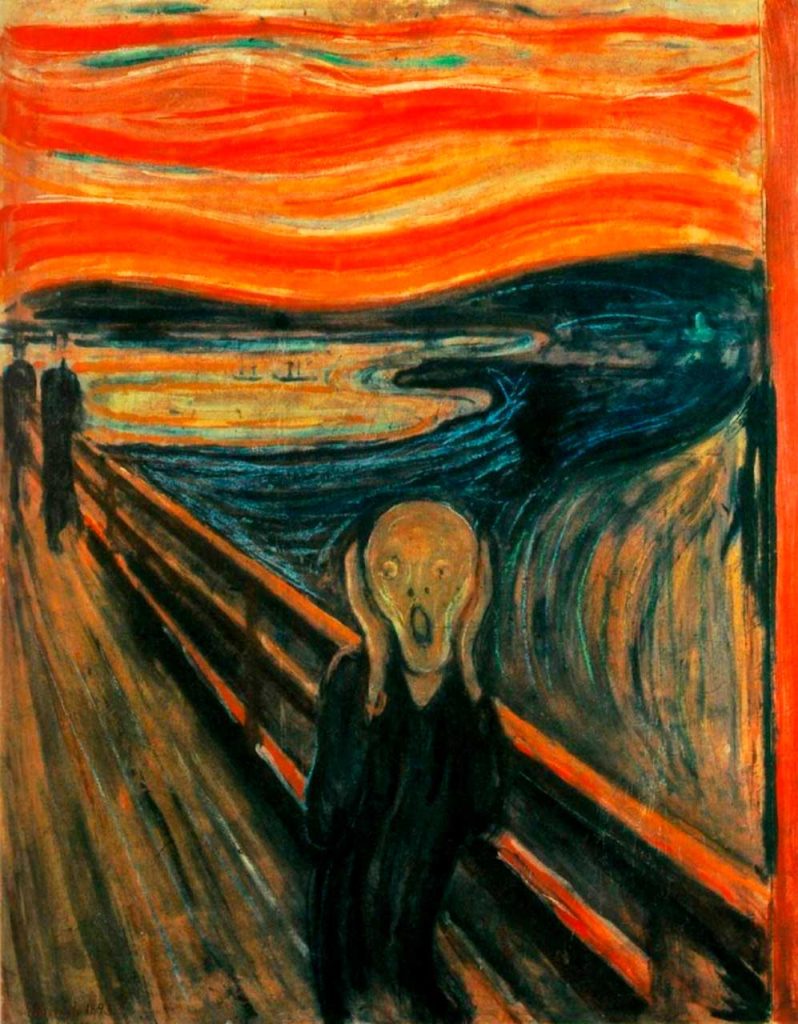

The Scream by Edvard Munch (1893)
This iconic painting shows a figure with a distorted face and an open mouth, as if screaming in horror or despair. The figure is surrounded by swirling colors and shapes that create a sense of movement and instability. Thisis a representation painting of Munch’s personal experience of anxiety and alienation, as well as a symbol of the existential angst of modern humanity.
The Persistence of Memory by Salvador Dali (1931)
This surreal painting shows a landscape with melting clocks, a distorted face, and other bizarre objects. The painting is a reflection of Dali’s subconscious mind and his exploration of time, memory, and identity. The painting is also a demonstration of Dali’s unique and innovative style of surrealism, which he called “paranoiac-critical method”.
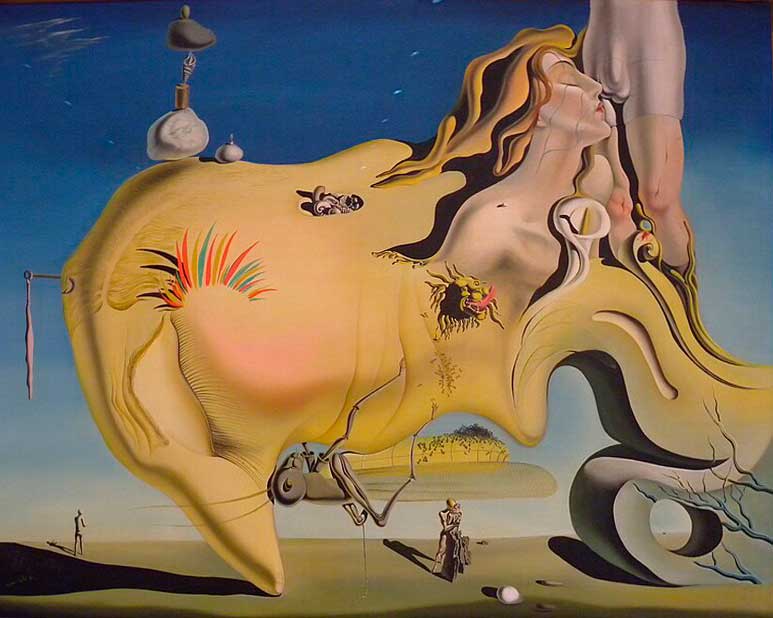

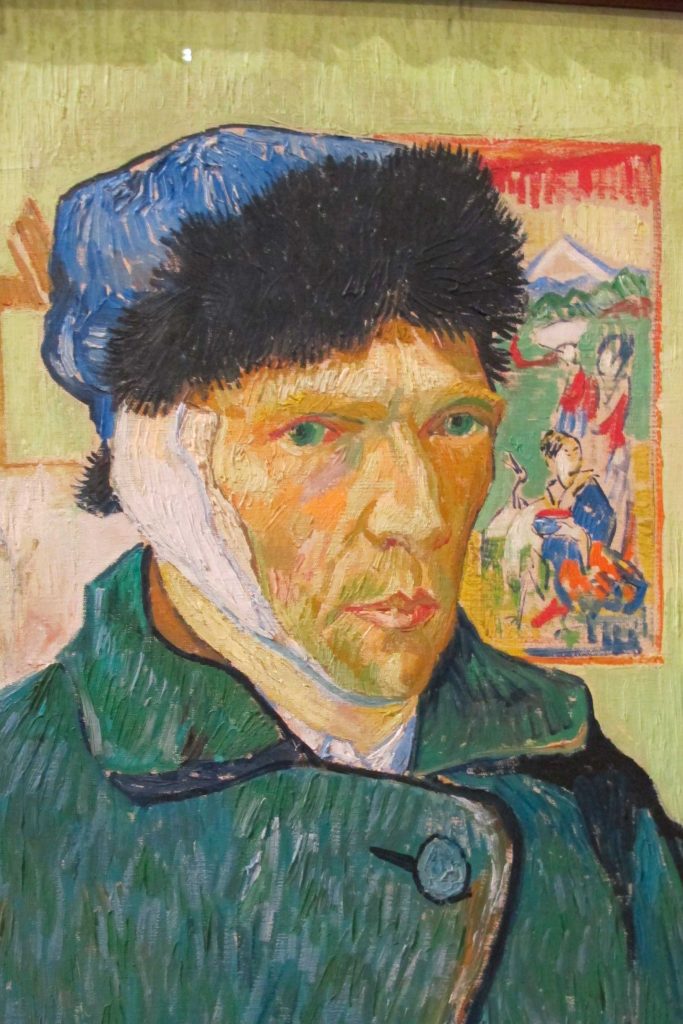

Self-Portrait with Bandaged Ear by Vincent van Gogh (1889)
This painting shows the artist after he cut off part of his ear following a quarrel with his friend and fellow painter Paul Gauguin. The painting reveals van Gogh’s physical and psychological wounds, as well as his loneliness and isolation. The painting is also a testament to van Gogh’s artistic identity and passion, as he continued to paint despite his suffering and rejection.
Freedom and Choice
Another theme of existentialism in art is freedom and choice. Existentialist artists portray the burden and opportunity of individual freedom in a world without objective rules or values. They also show the consequences and responsibilities of their choices and actions, as well as the possibility of creating new meanings and values.
Some examples of artworks that illustrate this theme are:
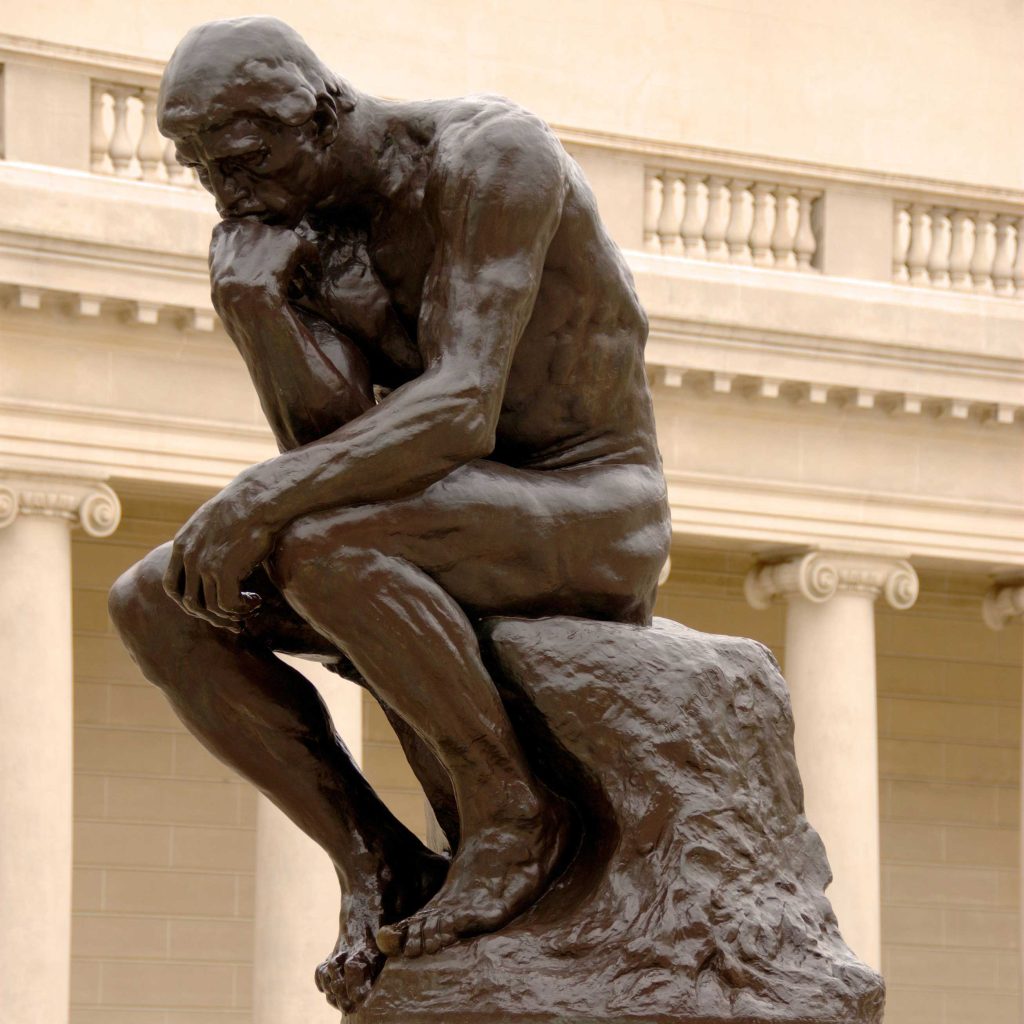

The Thinker by Auguste Rodin (1902)
This bronze sculpture shows a nude man sitting on a rock with his chin resting on his hand, as if deep in thought. The sculpture is a representation of the human condition, as the man contemplates his existence and his freedom. Additionaly, the sculpture is also a symbol of the intellectual and artistic freedom of Rodin, who broke away from the traditional norms and conventions of sculpture.
The Fountain by Marcel Duchamp (1917)
This controversial artwork consists of a porcelain urinal that Duchamp signed with the pseudonym “R. Mutt” and submitted to an exhibition of the Society of Independent Artists. The artwork is a challenge to the conventional notions of art, as Duchamp claimed that anything can be art if the artist chooses to present it as such. The artwork is also a demonstration of Duchamp’s artistic freedom and rebellion, as he rejected the aesthetic and technical standards of art and created a new form of art that he called “ready-made”.
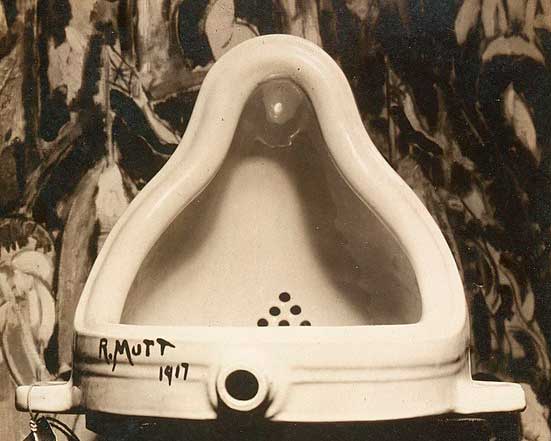

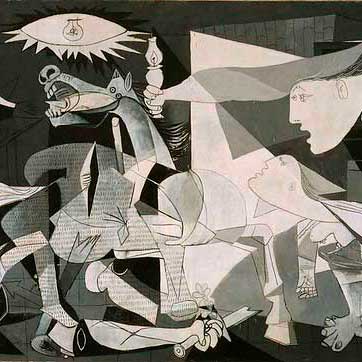

Guernica by Pablo Picasso (1937)
This large painting shows the horrors and suffering of the bombing of Guernica, a Basque town in Spain, during the Spanish Civil War. The painting is a protest against the violence and brutality of war, as well as a plea for peace and humanity. The painting is also a manifestation of Picasso’s artistic freedom and innovation, as he used his own style of cubism and symbolism to create a powerful and expressive work of art.
Angst and Absurdity
A third theme of existentialism in art is angst and absurdity. Existentialist artists express feelings of anxiety, meaninglessness, and the inherent absurdity of existence. They also confront the reality of death and the limits of human knowledge and reason.
Some examples of artworks that illustrate this theme are:
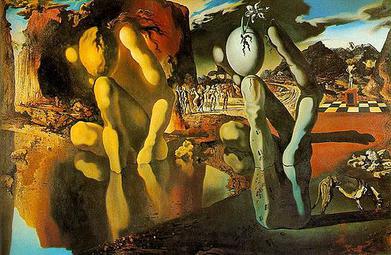

The Metamorphosis of Narcissus by Salvador Dali (1937)
This surreal painting shows a scene inspired by the Greek myth of Narcissus, who fell in love with his own reflection and turned into a flower. The painting depicts a hand holding an egg, from which a flower emerges, next to a decaying figure that resembles a hand. Thís artwork is a representation of the absurdity and futility of human existence, as well as the transformation and decay of life.
The Treachery of Images by Rene Magritte (1929)
This painting shows a realistic image of a pipe, with the words “Ceci n’est pas une pipe” (This is not a pipe) written below it. The painting is a paradox and a contradiction, as it questions the relationship between reality and representation. Its also a reflection of the absurdity and irrationality of human language and logic.


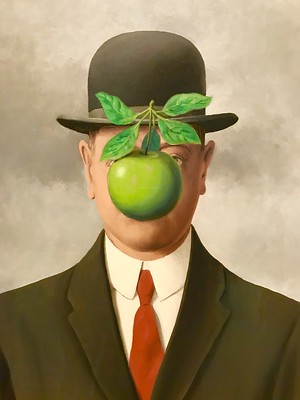

The Son of Man by Rene Magritte (1964)
This painting shows a man in a suit and a bowler hat, with his face obscured by a green apple. The painting is a mystery and a riddle, as it hides the identity and expression of the man. The painting is also a commentary on the absurdity and anonymity of modern society and the human condition.
Authenticity and Existence
A fourth theme of existentialism in art is authenticity and existence. Existentialist artists grapple with the question of creating an authentic life in an uncaring universe. They also explore the essence and value of human existence, as well as the potential and creativity of human beings.
Some examples of artworks that illustrate this theme are:
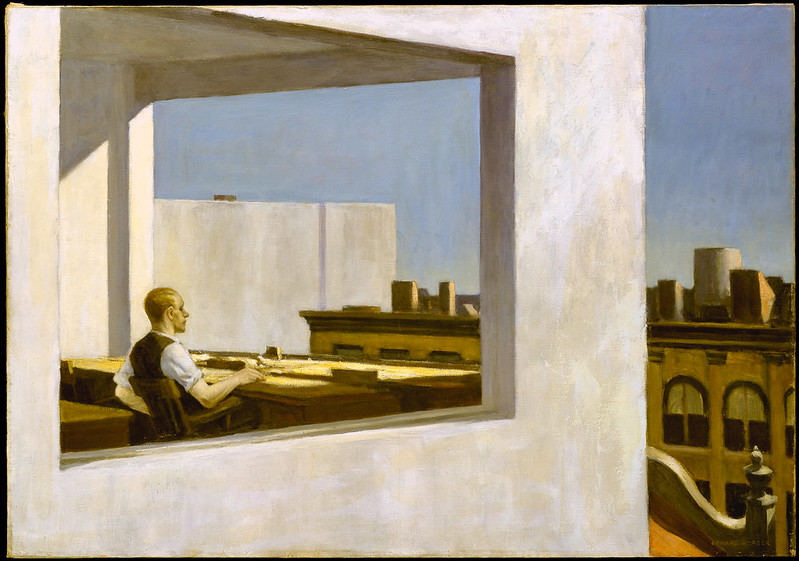

Nighthawks by Edward Hopper (1942)
This painting shows a scene of a diner at night, with four people sitting inside and a street outside. Is a depiction of the loneliness and isolation of urban life, as well as the alienation and detachment of the people. The artwork is also a reflection of Hopper’s personal and artistic vision, as he captured the mood and atmosphere of his surroundings with his realistic and distinctive style.
The Starry Night by Vincent van Gogh (1889)
This painting shows a view of the night sky, with swirling stars, a crescent moon, and a village below. The painting is a expression of van Gogh’s emotions and imagination, as he painted the scene from memory and added his own elements and colors. Is also a celebration of the beauty and wonder of nature and existence, as well as the artistic and spiritual potential of human beings.
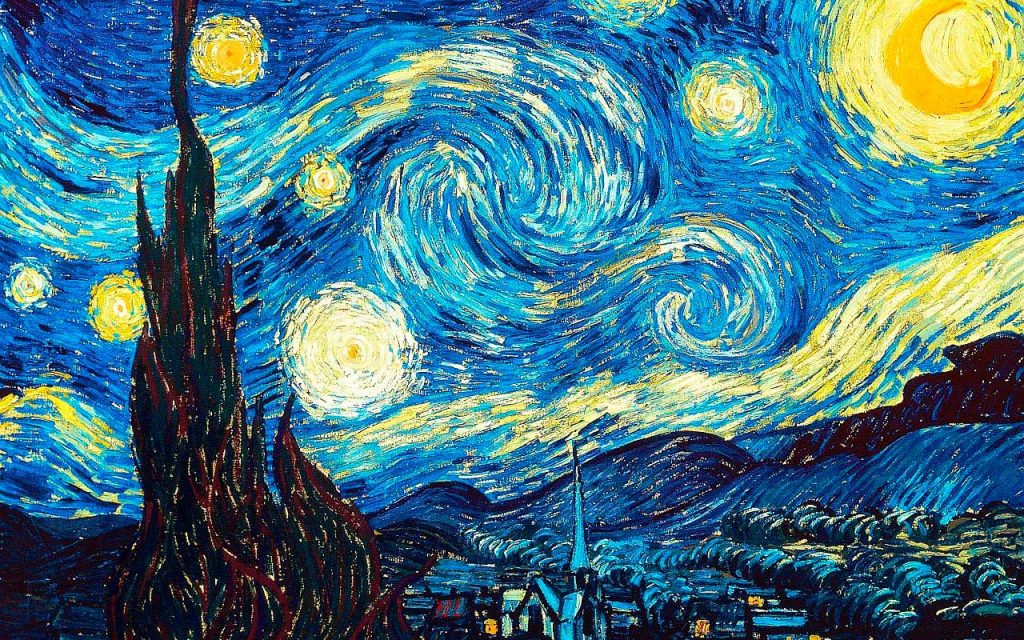

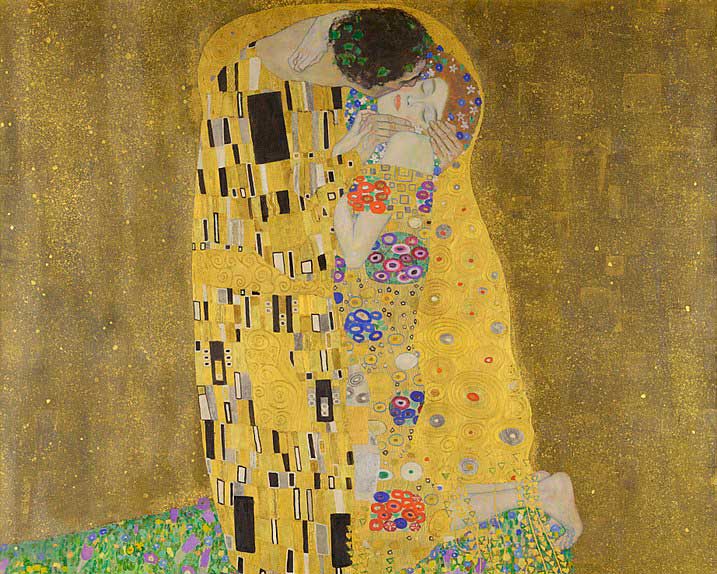

The Kiss by Gustav Klimt (1907-08)
This painting shows a couple embracing and kissing, with their bodies covered by a pattern of gold and colorful shapes. The painting is a representation of love and intimacy, as well as the harmony and unity of the couple. The painting is also a manifestation of Klimt’s artistic and personal freedom, as he used his own style of symbolism and ornamentation to create a sensual and sublime work of art.
Impact of Existentialism on Art Movements
Existentialism in art is not only a theme, but also a source of inspiration and influence for various art movements. Originating as a philosophy in the 19th and 20th centuries, existentialism emerged in response to the profound social and cultural transformations brought about by industrialization, urbanization, and modernization. It gained particular prominence in the aftermath of World War I and World War II, as people grappled with the horrors and traumas of war and genocide.
Existentialism influenced many artists and thinkers, who adopted and adapted its concepts and ideas to their own fields and contexts. Existentialism also sparked new and innovative forms of artistic expression and experimentation, as artists sought to challenge the established norms and conventions of art and society.
Here are some of the art movements that were influenced by existentialism and how they contributed to the development of existentialism in art:
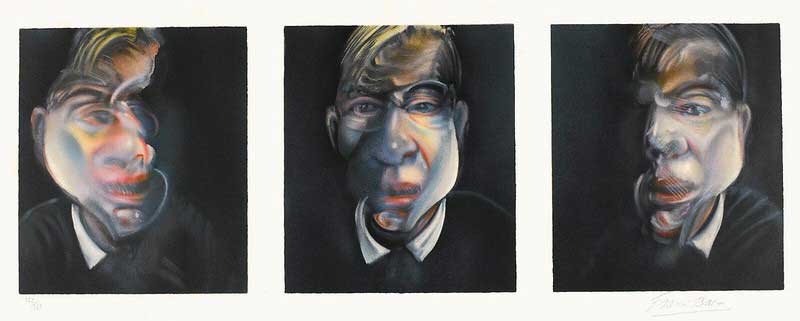

Existentialist Art
Existentialist art is a movement that emerged in the post-World War II period and focused on existential themes and personal expression. Inspired by the philosophical writings of existentialist thinkers like Jean-Paul Sartre and Albert Camus, this art form delved into concepts such as freedom, responsibility, absurdity, and authenticity.
In response to the aftermath of the war, marked by trauma and disillusionment, as well as the ascendance of totalitarianism and consumerism, Existentialist art served as a means of artistic reaction. Artists within this movement aimed to convey their unique experiences and emotions while simultaneously questioning and challenging societal values and norms.
Some of the characteristics and techniques of existentialist art are:
- The use of figurative and realistic imagery, often distorted or exaggerated, to convey the angst and alienation of the human condition
- The use of dark and muted colors, as well as contrast and shadows, to create a mood of gloom and despair
- The use of symbolism and metaphors, as well as references to mythology and literature, to communicate existential concepts and questions
- The use of personal and autobiographical elements, as well as self-portraits, to reveal the identity and personality of the artist
Existentialist Art Masters
Some of the examples and figures of existentialist art are:
- Edvard Munch: A Norwegian painter who is considered one of the pioneers of expressionism and existentialism in art. He is best known for his painting The Scream, which depicts his personal experience of anxiety and alienation. He also painted other works that explore themes of death, love, loneliness, and madness, such as The Sick Child, The Dance of Life, and The Vampire.
- Francis Bacon: A British painter who is regarded as one of the most influential and original existentialist artists. He is famous for his paintings of distorted and deformed figures, often in isolated and claustrophobic settings, that express the horror and suffering of human existence. He also painted portraits of his friends and lovers, as well as historical and religious figures, such as Pope Innocent X, Henrietta Moraes, and George Dyer.
- Alberto Giacometti: A Swiss sculptor who is recognized as one of the masters of existentialist art. He is known for his sculptures of thin and elongated figures, often in groups or pairs, that represent the fragility and solitude of human beings. He also sculpted heads and busts of his family and friends, as well as objects and landscapes, such as The Palace at 4 a.m., The Nose, and The Chariot.
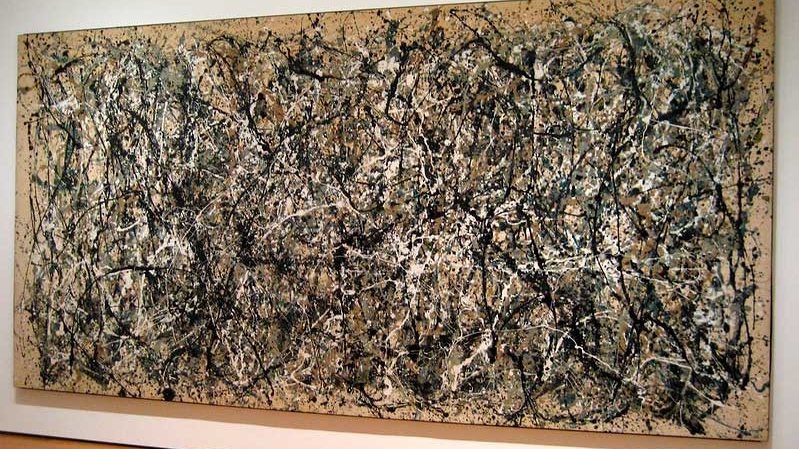

Abstract Expressionism
The Abstract Expressionism movement took root in the 1940s and 1950s in New York, marking the first American art movement to achieve international recognition and influence. This artistic wave drew inspiration from existentialism, along with other diverse influences like surrealism, primitivism, and psychoanalysis.
In addition to its philosophical underpinnings, Abstract Expressionism also served as a reaction to the social and political upheaval of the post-war era, coupled with the ascent of mass media and consumer culture. Artists within this movement aimed to convey their emotions and subconscious impulses through abstract forms and colors, striving to forge innovative and original means of artistic expression and communication.
Some of the characteristics and techniques of abstract expressionism are:
- The use of large-scale canvases, often covering the entire wall or floor, to create a sense of immersion and impact
- The use of spontaneous and expressive painting techniques, such as dripping, splashing, staining, and gestural brushstrokes, to convey movement and energy
- The use of vibrant and contrasting colors, as well as texture and depth, to create a visual and emotional effect
- The use of symbolism and metaphors, as well as titles and statements, to suggest meanings and interpretations
Abstract Expressionism Artists
Some of the examples and figures of abstract expressionism are:
- Willem de Kooning: A Dutch-American painter who is considered one of the leaders and innovators of abstract expressionism. He is best known for his series of paintings of women, which combine figurative and abstract elements, as well as his landscapes and cityscapes, which reflect his views and experiences of urban life. He also painted other works that explore themes of sexuality, violence, and identity, such as Excavation, Woman I, and Interchange.
- Jackson Pollock: An American painter who is regarded as one of the most influential and original abstract expressionists. He is famous for his paintings of dripped and splattered paint, which he created by laying the canvas on the floor and moving around it with a stick or a brush. He also painted other works that use different techniques and materials, such as Number 1, Lavender Mist, and Blue Poles.
- Mark Rothko: An American painter who is recognized as one of the masters of abstract expressionism. He is known for his paintings of large rectangles of color, which he arranged in horizontal or vertical compositions, creating a sense of space and atmosphere. He also painted other works that use different shapes and colors, such as No. 3/No. 13, Orange and Yellow, and Black on Gray.


Surrealism
Originating in Paris during the 1920s and 1930s, Surrealism stands out as one of the 20th century’s most influential and diverse art movements. Its roots are embedded in existentialism, alongside various other wellsprings of inspiration like Freudian psychoanalysis, Dadaism, and Marxism.
Additionally to its intellectual foundations, Surrealism emerged as a response to the societal and cultural upheavals following the war, as well as the ascendancy of rationalism and materialism. Surrealists endeavored to free the imagination and the unconscious from the confines of reality and reason, simultaneously challenging the established conventions and norms of both art and society.
Some of the characteristics and techniques of surrealism are:
- The use of dreamlike imagery and irrational juxtapositions, often creating a sense of surprise and shock
- The use of automatism and chance, such as collage, frottage, and exquisite corpse, to bypass the conscious mind and access the subconscious
- The use of symbolism and metaphors, as well as references to mythology and literature, to communicate hidden meanings and messages
- The use of humor and irony, as well as parody and satire, to criticize and subvert the established order and values
Surrealism Artists
Some of the examples and figures of surrealism are:
- Salvador Dali: A Spanish painter who is considered one of the most famous and influential surrealists. He is best known for his paintings of melting clocks, elephants with long legs, and other bizarre and absurd scenarios, which he called “hand-painted dream photographs”. He also painted other works that explore themes of sexuality, religion, and history, such as The Temptation of St. Anthony, The Sacrament of the Last Supper, and The Discovery of America by Christopher Columbus.
- Rene Magritte: A Belgian painter who is regarded as one of the most original and witty surrealists. He is famous for his paintings of ordinary objects and scenes, which he transformed into paradoxes and contradictions, such as a pipe that is not a pipe, a man with an apple for a face, and a sky filled with clouds and rocks. He also painted other works that use different techniques and styles, such as The False Mirror, The Human Condition, and The Empire of Light.
- Max Ernst: A German painter who is recognized as one of the pioneers and innovators of surrealism. He is known for his paintings of fantastical creatures and landscapes, which he created by using various methods of collage, frottage, grattage, and decalcomania. He also painted other works that use different themes and motifs, such as The Elephant Celebes, Europe After the Rain, and The Garden of France.
Existentialism in Art Today
Existentialism in art is not a thing of the past. Existential themes continue to resonate in contemporary art and culture, as artists and audiences face new and old challenges and questions about existence. Existentialism in art today is a diverse and dynamic field that encompasses different mediums, genres, and styles, as well as different perspectives, contexts, and messages.
Contemporary Existentionalism Artists
Some of the current artists who explore existential themes in their work are:
- Marina Abramovic: A Serbian performance artist who uses her body and endurance to challenge the limits of physical and mental existence. She is best known for her performances that involve pain, risk, and interaction with the audience, such as Rhythm 0, The Artist is Present, and The Lovers.
- Damien Hirst: A British conceptual artist who uses dead animals and skulls to confront the mortality and meaninglessness of life. He is famous for his works that involve preservation, dissection, and display of animals, such as The Physical Impossibility of Death in the Mind of Someone Living, Mother and Child Divided, and For the Love of God.
- Banksy: A British street artist who uses graffiti and stencils to critique the absurdity and injustice of society and politics. He is known for his works that involve humor, irony, and subversion, such as Girl with Balloon, Kissing Coppers, and Dismaland.
Contemporary Existentionalism Works
Some of the examples of their work and how they reflect existential concepts and questions are:
- The Artist is Present by Marina Abramovic (2010): This performance involved the artist sitting silently on a chair in the Museum of Modern Art in New York, facing a series of visitors who sat on another chair in front of her. The performance lasted for 736 hours and 30 minutes, during which the artist and the visitors stared into each other’s eyes. The performance was a test of the artist’s stamina and concentration, as well as a exploration of the relationship between the artist and the audience, and the essence and value of human connection.
- For the Love of God by Damien Hirst (2007): This artwork consists of a platinum cast of a human skull, encrusted with 8,601 diamonds, including a large pink diamond on the forehead. The artwork is a confrontation of the themes of death and vanity, as well as a commentary on the art market and the commodification of art. The artwork is also a paradox and a contradiction, as it combines the symbols of mortality and luxury, and the questions of beauty and horror.
- Dismaland by Banksy (2015): This artwork was a temporary art project and a parody of Disneyland, set up in a seaside town in England. The artwork featured a dystopian theme park, with attractions such as a dilapidated castle, a crashed Cinderella carriage, and a grim reaper on a bumper car. The artwork was a satire of the consumerist and capitalist culture, as well as a critique of the social and environmental issues of the world. The artwork was also a challenge and a provocation, as it invited the visitors to experience and question the reality and illusion of happiness.
Raul Lara: A Neophotorealist Artist with an Existentialist Vision
Raul Lara is a contemporary artist who specializes in figurative painting with a neophotorealistic style, neophotorealism Raúl´s hands, become in a new and unique way of combining modern elements like image transfer from a photography by the use of gessos and traditional figurative oil painting. His work talks about the relationship between body and soul and how they reflect the existential themes of identity, freedom, angst, and authenticity.
Raul Lara’s work has a strong impact on the viewer experience, as it invites the viewer to question and challenge their own existence and values, as well as to appreciate and empathize with the artist’s vision and expression.
Raul Lara is an artist who explores the human condition through his neophotorealistic style, which combines realism and abstraction, figurative and symbolic, and classical and modern. He is an artist who unveils the meaning of life through his powerful visuals, which reflect his existentialist vision.
Raul Lara Existentialist Artworks
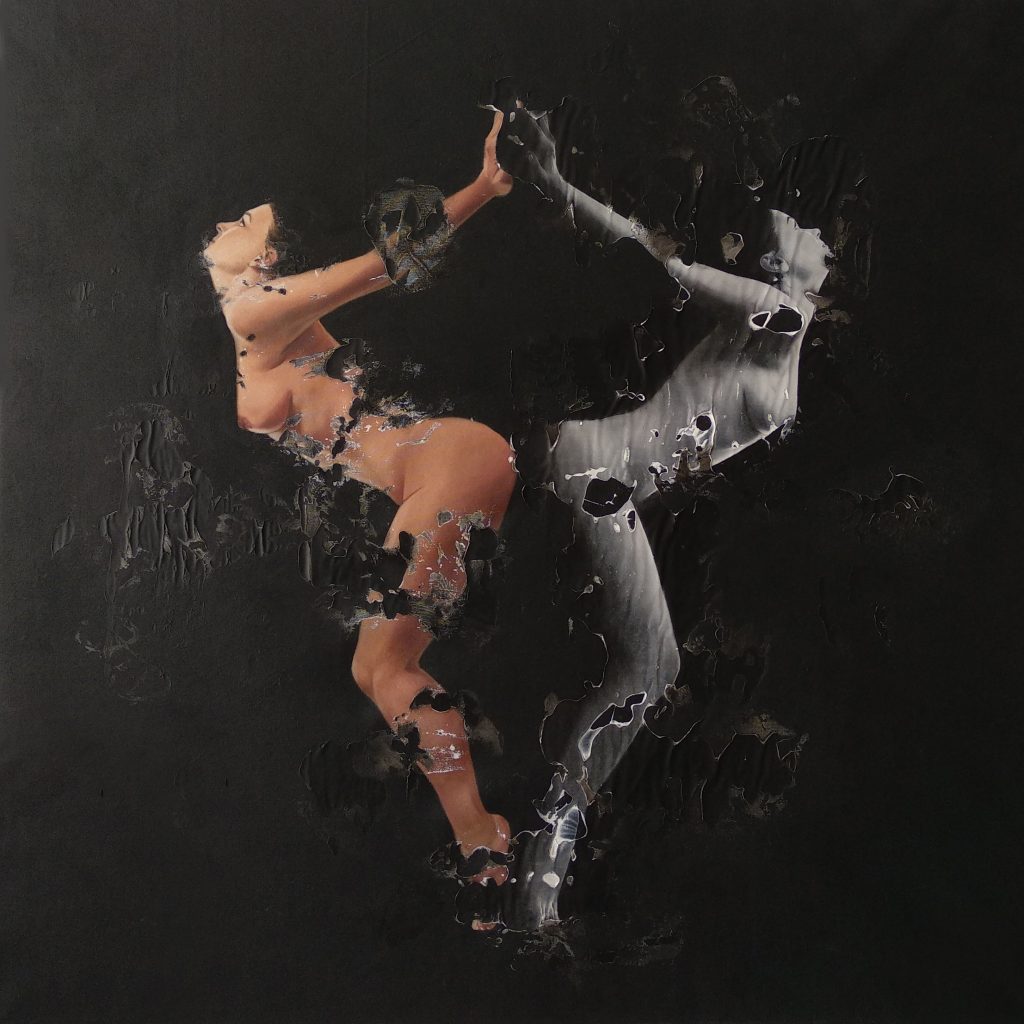

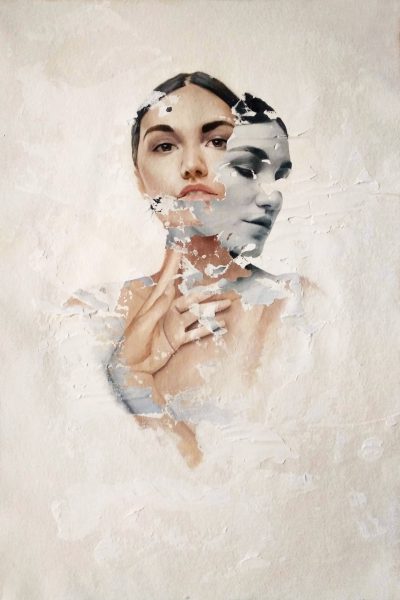

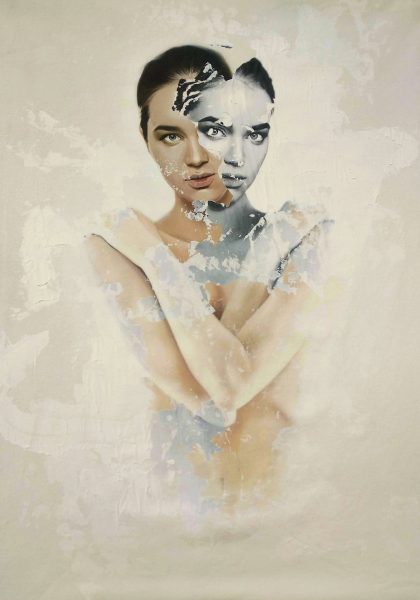

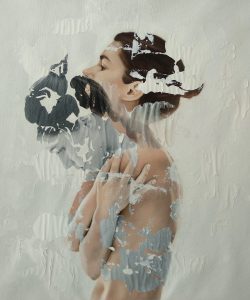

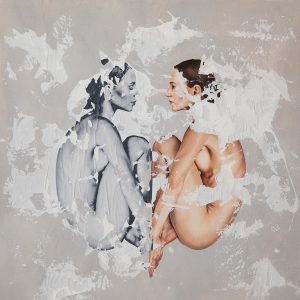

Conclusion
Existentialism in art is a fascinating and diverse field that explores the meaning of life through powerful visuals. Existentialism in art unveils the human condition and the human experience, as well as the human potential and creativity.
In this blogpost, we have discovered how existentialism in art reflects the key themes of existentialism as a philosophy and as a way of life. We have also traced the impact of existentialism on various art movements and seen how existential themes continue to resonate in contemporary art and culture.
But existentialism in art is not only a topic to read and learn about. It is also a topic to explore and discuss. Existentialism in art invites us to question and challenge our own existence and values, as well as to create and express our own meanings and values.
Existentialism in art is a world where art meets philosophy. It is a world where artists and audiences meet and interact. It is a world where we can unveil the meaning of life.
Thank you for reading this blogpost. We hope you enjoyed it and learned something new. Please leave your comments and feedback below. We would love to hear from you. 😊
FAQs
- Q: What is existentialism?
- A: Existentialism is a philosophy that emphasizes individual existence, freedom, responsibility, and absurdity. It rejects the idea that there is a predefined or universal essence or meaning to human life. Instead, it asserts that each person has to create their own meaning and values through their choices and actions.
- Q: What is existentialism in art?
- A: Existentialism in art is a field that explores existential themes and concepts through art. Existentialism in art is not a single style or genre, but a diverse and dynamic field that encompasses different periods, genres, and mediums. Existentialism in art reflects the human condition and the human experience, as well as the human potential and creativity.
- Q: What are the main themes of existentialism in art?
- A: The main themes of existentialism in art are individuality and identity, freedom and choice, angst and absurdity, and authenticity and existence. These themes reflect the core concepts and concerns of existentialism as a philosophy and as a way of life.
- Q: What are some of the art movements that were influenced by existentialism?
- A: Some of the art movements that were influenced by existentialism are existentialist art, abstract expressionism, and surrealism. These movements adopted and adapted existential concepts and ideas to their own fields and contexts, and contributed to the development of existentialism in art.
- Q: What are some of the current artists who explore existential themes in their work?
- A: Some of the current artists who explore existential themes in their work are Marina Abramovic, Damien Hirst, and Banksy. These artists use different mediums, genres, and styles to convey their existential thoughts and feelings, as well as to critique and challenge the values and norms of society and culture.

